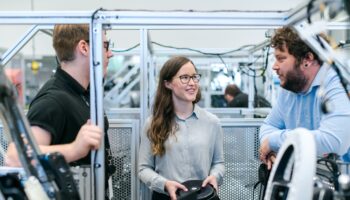Introduction:
In the pursuit of more sustainable transportation, the automotive industry has been continuously exploring innovative ways to enhance vehicle efficiency and reduce carbon emissions. One of the key areas of focus has been car aerodynamics, as it plays a crucial role in improving fuel economy and overall performance. This article delves into the recent advances in car aerodynamics, how they are revolutionizing automotive efficiency, and their impact on promoting greener driving practices.
Understanding the Importance of Aerodynamics:
Aerodynamics refers to the study of how air interacts with moving objects, and in the case of cars, it plays a critical role in shaping the vehicle’s performance. When a car is in motion, it encounters air resistance, commonly known as drag, which can significantly affect its fuel efficiency. By optimizing the car’s shape to minimize drag, automakers can make significant strides in fuel economy.
Streamlining the Body Design:
Recent advancements in computational fluid dynamics (CFD) and wind tunnel testing have allowed car manufacturers to analyze and fine-tune vehicle designs with greater precision. By incorporating smooth, curved contours, and reducing sharp edges, modern cars can cut through the air more efficiently. Some automakers have even experimented with active aerodynamics, where components like spoilers or air vents adjust automatically to optimize airflow based on driving conditions.
Active Grille Shutters and Air Curtains:
Innovations such as active grille shutters and air curtains further contribute to reducing drag and improving aerodynamics. Active grille shutters are placed in the front grille of a vehicle and can automatically open or close to regulate airflow. By doing so, they improve engine cooling and aerodynamics simultaneously. Air curtains, on the other hand, are small vents or channels that direct airflow around the front wheels, reducing turbulence and drag.
Underbody Panels and Wheel Design:
The underside of a car is another area that has been the subject of optimization for aerodynamic gains. Smooth underbody panels help channel air more efficiently beneath the vehicle, reducing drag. Additionally, wheel design has also been refined to minimize drag, with some manufacturers using aerodynamic covers or even specially designed wheel rims to improve airflow around the wheels.
Balancing Aesthetics and Performance:
While improving aerodynamics is essential for greener driving, car designers also face the challenge of maintaining aesthetics and safety. Striking a balance between form and function requires collaboration between aerodynamic experts and designers to create visually appealing cars without compromising on performance.
Conclusion:
The ongoing advancements in car aerodynamics are a significant step towards achieving greener driving practices. As the automotive industry continues to embrace these innovations, we can expect vehicles to become more fuel-efficient, produce fewer emissions, and contribute to a cleaner environment. By revolutionizing automotive efficiency through advances in car aerodynamics, we move closer to a more sustainable future for transportation.
- THE EVOLUTION OF PLASTIC SURGERY - 17 June 2024
- CHOOSE THE RIGHT PERSONAL INJURY LAW FIRM IN CHARLOTTE NORTH CAROLINA - 16 June 2024
- Email UX optimization, offering actionable insights - 16 June 2024






2 Comments